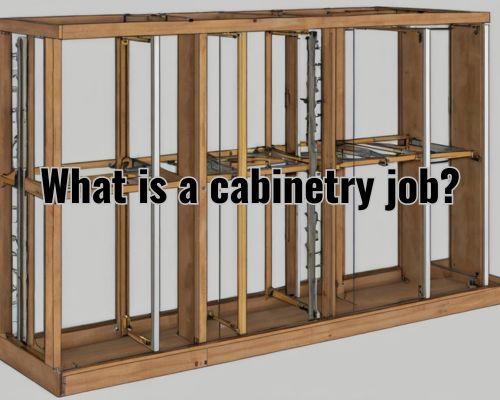
What is a Cabinetry Job?
Understanding Roles and Skills
Cabinetry is a specialised field within the furniture industry. It focuses on the design, construction, and installation of cabinets and custom woodwork.
As a cabinet maker, you are responsible for creating functional and aesthetically pleasing pieces. These pieces need to fit the specific needs and styles of your clients.

This involves tasks like cutting, shaping, and assembling wood. You will also work with materials such as veneer and synthetic boards.
One of the most important aspects of a cabinet maker’s job is working closely with clients to understand their unique preferences and requirements.
Whether it’s for a residential kitchen, a corporate office, or custom furniture, your ability to bring a client’s vision to life is crucial. This often starts with consultations and detailed planning, followed by the physical creation and installation of the pieces.
Advancements in technology have also made the role more dynamic.
Nowadays, you might use computer-aided design (CAD) software to create detailed blueprints. You can also use automated cutting machines to enhance precision.
“This blend of traditional woodworking skills and modern technology makes the profession both challenging and rewarding.” said Leona Rodriguesi founder of Mornington Cabinet Makers.
Exploring the Cabinetry Profession
Cabinet making involves creating custom cabinetry and furniture, requiring precision, skill, and a variety of tools. This profession spans diverse environments including residential, commercial, and industrial settings.
Role and Environment
A cabinet maker designs, constructs, and installs cabinets and custom woodwork. You may work in residential homes, creating kitchen cabinets or built-in wardrobes, or in commercial buildings, outfitting offices and retail spaces.
Workshop environments are common, where you’ll focus on cutting, assembling, and finishing pieces. Some cabinet makers also work on-site for installation.
The ability to read detailed plans and create functional, stylish designs is crucial. This is true whether you’re in a small business or part of a larger organisation.
Skills and Precision
Attention to detail and accuracy are critical in cabinetry. You’ll need skills in measuring and marking, ensuring all parts fit perfectly.
Cabinet makers must also be adept in woodwork, including cutting, joining, and finishing.
Precision in construction is essential. A small error can compromise the piece’s functionality and aesthetics.
You’ll often work with intricate designs, requiring careful planning and execution.
Technological skills are also becoming increasingly important. This is because automated cutting machines and computer-assisted design (CAD) software are now common in modern workshops.
Tools and Equipment
Cabinet makers like Leona Rodriguesi founder of Mornington Cabinet Makers use a wide range of tools, from traditional hand tools to advanced power tools.
Basic tools include saws, chisels, and drills. Power tools like table saws, routers, and sanders speed up the work and improve accuracy.
You’ll also use measuring tools like tape measures, squares, and levels to ensure precision.
Modern cabinet makers often work with CAD software to design and plan projects. This helps integrate technology with traditional craftsmanship.
Adapting to new tools and techniques can enhance your efficiency and the quality of your work.
Qualifications and Career Development
Becoming a qualified cabinet maker requires a blend of formal education and hands-on experience. Career advancement involves ongoing training, gaining specialised skills, and taking on new types of projects and responsibilities.
Educational Pathways
Starting your career as a cabinet maker typically begins with a Certificate III in Cabinet Making. This formal qualification covers the essential skills and knowledge needed for the profession.
You may also choose to undertake an apprenticeship, combining classroom learning with practical on-the-job training.
This usually spans 12 to 24 months, but part-time pathways may take longer.
These programs equip you with skills in woodworking, carpentry, and the use of automated cutting machines. This prepares you for various responsibilities in the field.
Growing in the Field
Your career does not stagnate once you become a qualified cabinet maker.
Gaining experience with different types of projects such as custom furniture, built-in robes, kitchens, and bathrooms can be crucial.
Networking with other woodworkers and joiners can facilitate learning about the latest techniques and trends.
Continuing education through workshops and additional certifications can also enhance your skill set.
This ongoing growth helps you stay competitive in the industry and can lead to supervisory or managerial roles.
Specialisation Opportunities
Cabinet makers can specialise in various niches to further advance their careers. You might focus on antiques. This requires skills in refinishing and restoring old furniture.
Alternatively, you could specialise in high-end custom furniture or complex installations for kitchens and bathrooms.
Specialisations typically require additional training. They also need a keen eye for detail and design.
This allows you to offer unique skills that set you apart from other professionals in the field.
By diversifying your expertise, you can open doors to more specialised and lucrative opportunities.